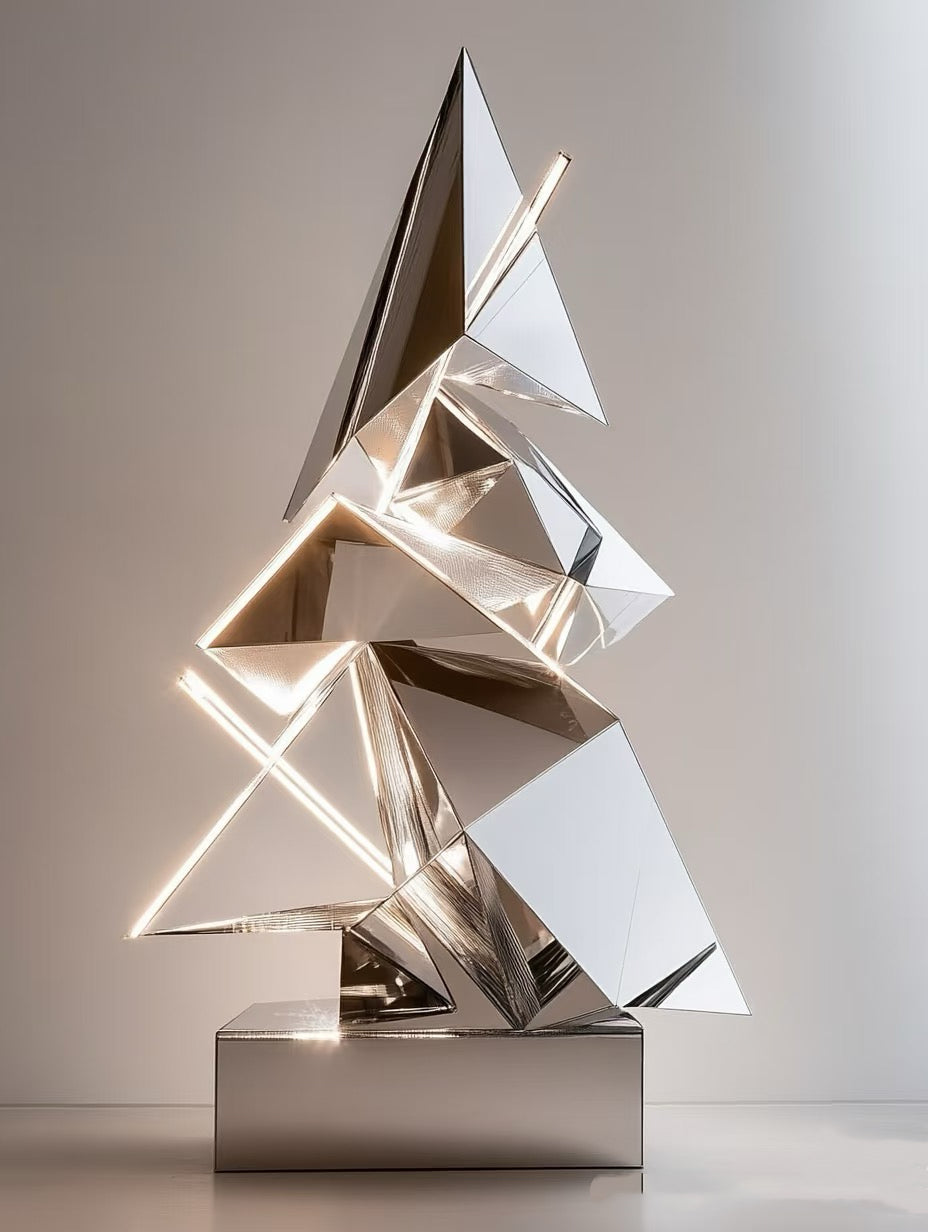
The Brilliance of Contemporary Metal Art
Metal, with its resilience, luster, and transformative qualities, has always held a central role in human creativity. From ancient weaponry to ornate jewelry, from architectural marvels to industrial design, metal has been shaped into forms that define civilizations. In the world of contemporary art, however, metal is no longer bound by function or ornament—it has become a medium of pure expression, as shown in striking works like the geometric sculpture above.
This artwork is an exploration of form, light, and reflection. Crafted from polished metallic surfaces, it appears as a series of intersecting planes, each cut with sharp precision. The arrangement recalls crystalline structures, origami folds, or even futuristic architecture. Yet what makes it truly mesmerizing is how the surfaces interact with light. Embedded illumination accentuates the sharp angles, creating glowing lines that transform the sculpture into a living object—part machine, part jewel.
Unlike traditional sculpture, which often aims to represent the human figure or natural forms, contemporary metal art emphasizes abstraction and perception. The mirrored surfaces reflect not only the environment but also the viewer, inviting a dialogue between artwork and observer. Standing before such a piece, one does not merely look at the sculpture; one becomes part of it, captured in its fragmented reflections. This dynamic interplay challenges the boundaries between object and audience, reality and illusion.
The material itself—metal—carries deep symbolism. It embodies strength and permanence, yet when shaped into delicate, angular designs, it demonstrates flexibility and innovation. This duality reflects the modern human experience: rooted in tradition yet constantly redefined by technology and imagination. The illuminated lines within the sculpture also highlight the way metal art embraces light as a co-creator. Without light, the piece would be static; with it, the sculpture pulses with energy, suggesting motion and transformation.
Historically, metalworking required immense skill, from blacksmithing to fine engraving. In contemporary practice, artists often merge craftsmanship with advanced techniques such as laser cutting, welding, and digital design. This fusion allows for previously impossible geometries, sharpness, and integration of lighting technology, pushing metal art into the realm of futuristic design. The result is not only an artwork but also an architectural statement—an object that could belong in both a gallery and a modern urban space.
This particular work embodies a tension between nature and artificiality. Its triangular forms evoke a stylized tree or mountain, yet its reflective steel and glowing lines suggest technology, progress, and futurism. In this way, the sculpture becomes a bridge between organic inspiration and industrial execution, reminding us that art often arises where opposites meet.
Ultimately, contemporary metal art like this is more than a display of material mastery—it is a meditation on perception, space, and the relationship between humans and their environment. It teaches us that even the hardest materials can be transformed into fluid expressions of beauty, and that reflection—literal and metaphorical—is at the heart of modern creativity.